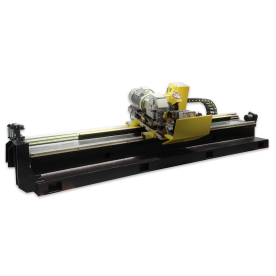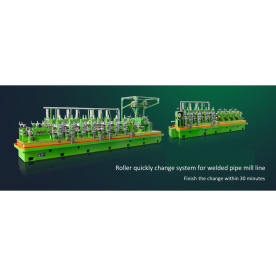[Energy-saving induction heating equipment]Exploring the Benefits and Applications of Energy-Saving Induction Heating Equipment in Modern Industries
News 2024-12-10
****In today’s fast-paced world, energy efficiency has become an essential aspect of industrial processes. As industries strive to reduce their carbon footprint and operational costs, energy-saving induction heating equipment has emerged as a valuable technology. This article explores the benefits, applications, and advancements of energy-saving induction heating equipment, shedding light on its significance in various industries.
Understanding Induction Heating
Induction heating is a process that uses electromagnetic fields to heat conductive materials, such as metals. The principle behind induction heating is Faraday’s law of electromagnetic induction. When an alternating current passes through a coil, it generates a magnetic field, which induces electrical currents in the metal object placed within the field. This results in rapid heating of the object without direct contact with a flame or heating element.
The Rise of Energy-Saving Technology
Energy efficiency is more than just a trend; it’s become a necessity due to rising energy costs and environmental concerns. Traditional heating methods, such as gas or conventional electric heating, often result in significant energy losses. In contrast, energy-saving induction heating equipment offers higher efficiency rates, typically ranging from 80% to 95%. This is because induction heating produces heat directly within the material, minimizing energy waste associated with heating the surrounding environment.

Exploring the Benefits and Applications of Energy-Saving Induction Heating Equipment in Modern Industries
1. **Reduced Energy Consumption**: One of the primary advantages of energy-saving induction heating equipment is its ability to significantly decrease energy consumption. By achieving higher efficiency, industries can lower their energy bills and reduce their overall operational costs.
2. **Precision Heating**: Induction heating allows for precise control of temperature and heating duration. This precision is crucial in processes such as metallurgical treatments, where specific temperature profiles are necessary to achieve desired material properties.
3. **Speed of Heating**: Induction heating is remarkably fast, which can enhance productivity in manufacturing processes. For example, induction heaters can reach desired temperatures in a matter of seconds, reducing downtime and accelerating production cycles.
4. **Clean and Safe Operation**: Unlike traditional heating methods, energy-saving induction heating equipment operates without flames, reducing safety risks associated with burns and combustion. Additionally, it generates minimal emissions, making it an environmentally friendly option.
5. **Versatile Applications**: Induction heating technology is versatile and can be adapted for various applications, including melting, forging, brazing, and heat treating. Its adaptability makes it suitable for industries such as automotive, aerospace, and electronics.
Applications in Various Industries
1. **Automotive Industry**: In the automotive sector, energy-saving induction heating is employed in processes such as hardening and tempering of gears, crankshafts, and other components. The ability to achieve precise temperatures and uniform heating results in improved material performance and longevity.
2. **Aerospace Sector**: The aerospace industry benefits from induction heating, particularly during the manufacturing of components that require stringent quality and precision standards. Induction heating is used for welding and treating superalloys, crucial for aircraft engines and structural parts.
3. **Electronics Manufacturing**: In the electronics industry, energy-saving induction heating is utilized for soldering connections and bonding components. The speed and accuracy of induction heating enhance production efficiency and quality control.
4. **Metalworking and Fabrication**: Metalworking industries use induction heating for processes such as forging, melting, and heat treatment. The versatility and efficiency of induction heating make it an ideal choice for fabricators seeking to optimize their heating processes.
Future of Energy-Saving Induction Heating Equipment
As technology continues to evolve, energy-saving induction heating equipment is expected to advance further. Innovations such as enhanced control systems, smarter interfaces, and integration with Industry 4.0 technologies will likely improve the efficiency and usability of induction heating solutions. Furthermore, ongoing research into materials and design improvements will continue to expand the range of applications and benefits of this technology.
Conclusion

Exploring the Benefits and Applications of Energy-Saving Induction Heating Equipment in Modern Industries

